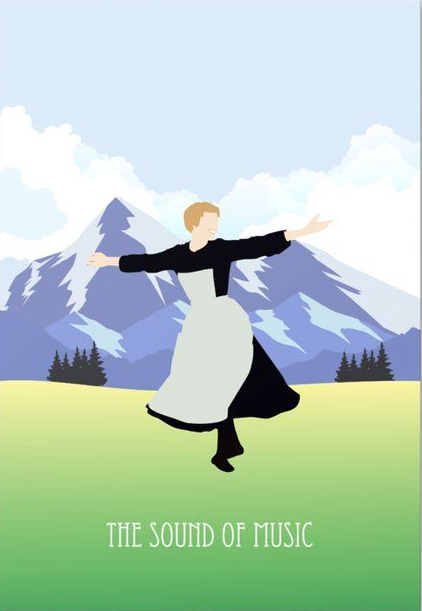ELMORE AND OUR SINGING HILLS
ELMORE AND OUR SINGING HILLS
High in the hills of Vermont is a little town called Elmore. Elmore is as quaint and charming as you might imagine it. Sitting on the edge of Lake Elmore, the city is a mere 14 miles north of Stowe, a popular ski destination and home to the Trapp Family Lodge. Elmore and the resort are known for their connection to the relatives portrayed in The Sound of Music.
Closer to Montreal than Boston, the less than one thousand residents enjoy a quiet and rural lifestyle that can't be found in larger cities. There are no traffic jams because there are no traffic lights and shopping is a breeze at the two-aisle town store.
If you were to drive through the center of town, you might think that you had traveled back to a different and simpler time. And it would be true, at least if you were to stop off at the town schoolhouse.
You see, the Elmore School is the last remaining one-room schoolhouse in America, and the community is fighting to keep it that way..
In a recent article, teacher Diane Nicholls describes her experience at the school founded in 1850, "I don't feel like I'm living in the 19th-century, but it is charming."
She further explained, "In many ways, our school is not that different from other schools. Last week, my students practiced nonfiction writing. A first-grade student wrote about chickens, while a few desks over, a third-grader wrote about her favorite animal, polar bears. Kids write and draw on paper, with iPads handy on their desks to research questions."
Yes, this quaint and charming school reminds us of a simpler time. A time without global warming, global conflict, and a time without music! Well, at least music in schools.
In a 2019 article, David Guion wrote, "The earliest documented American school instrumental music program began in 1857 at Boston's Farm and Trade School. A few other similar programs existed in the last half of the nineteenth century, but they had no standard instrumentation and offered no academic credit.
These various ensembles of stringed and wind instruments hardly count as orchestras or bands, as they were poorly instrumented, barely instructed, ad-hoc after-school programs."
World War I, and its requisite military bands, provided visibility and viability to modern concert bands, demonstrating the value of structured music-making. Shortly after that, music programs began emerging in schools. But, only after veterans returned home from World War II and the following baby boom occurred did we see band programs explode.
Jere T. Humphreys, writing in 1989, concluded, "Although the golden age of bands was from 1870 through Sousa's death in 1932, we are now living in the golden age of school instrumental performing ensembles."
Yes, despite being at the tail end of a global pandemic and all of its mitigating strategies, we are still in the golden age of music education.
Music education is a relatively young activity. Our entire profession is only seventy-five years old; we barely qualify for Social Security! People walking around today went to schools that did not have a band or orchestra.
Most instrument manufacturers, publishers, retailers, uniform producers, and furniture manufacturers are born of the same era. When you think of more recent adjunct businesses like drill design, electronic tuners, and assessment software, you see the infancy of our profession, the immensity of our future, and the impact it will have.
Music education has been growing since the first band in 1857, and despite this minor blip in time, it will continue to grow for another one hundred and fifty years. I know this because even in the one-room Elmore School, they have general music. So, in Elmore and beyond, the hills really are alive with the sound of music.
Have a great week!
-Scott
Scott Lang Leadership 505 South Camellia Drive Chandler, Arizona 85225 United States

